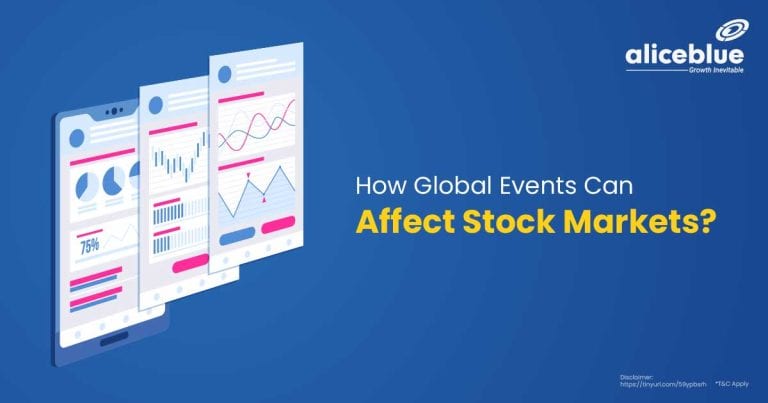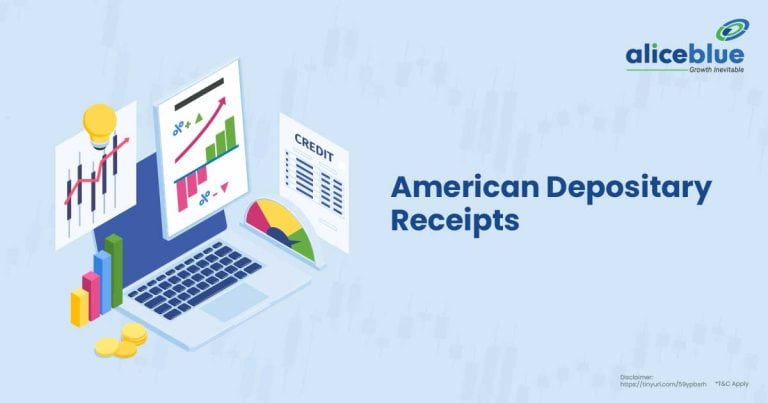The below table shows a list Of the Top Performing Sectoral Funds in 10 Years Based on AUM, NAV and minimum SIP.
| Name | AUM (Cr) | NAV (Rs) | Minimum SIP (Rs) |
| Nippon India Power & Infra Fund | 7537.49 | 397.79 | 100 |
| ICICI Pru Infrastructure Fund | 5703.04 | 207.55 | 100 |
| DSP India T.I.G.E.R Fund | 4896.2 | 365.95 | 100 |
| ICICI Pru Pharma Healthcare & Diagnostics (P.H.D) Fund | 4500.25 | 39.95 | 5000 |
| Quant Infrastructure Fund | 4103.61 | 46.13 | 1000 |
| DSP Healthcare Fund | 2755.75 | 42.39 | 100 |
| Bandhan Infrastructure Fund | 1934.06 | 64.91 | 100 |
| Invesco India Infrastructure Fund | 1470.26 | 79.95 | 100 |
| Canara Rob Infrastructure Fund | 883.84 | 182.21 | 100 |
| Bank of India Mfg & Infra Fund | 404.9 | 68.19 | 100 |
Introduction to Top Performing Sectoral Funds in 10 Years
Nippon India Power & Infra Fund
Nippon India Power & Infra Fund is a Sectoral-Infrastructure mutual fund scheme from Nippon India Mutual Fund. This fund has been operational for 11 years and 8 months, having been launched on January 1, 2013.
Nippon India Power & Infra Fund falls under the Sectoral Fund – Energy & Power category with an AUM of ₹7,537.49 crores, a 5-year CAGR of 34.16%, an exit load of 1% and an expense ratio of 1.01%. The SEBI risk category is Very High. Its asset allocation includes 98.60% in Equity and 1.40% in Cash & Equivalents.
ICICI Prudential Infrastructure Fund
ICICI Prudential Infrastructure Fund is a Sectoral-Infrastructure mutual fund scheme from ICICI Prudential Mutual Fund. This fund has been operational for 11 years and 8 months, having been launched on January 1, 2013.
ICICI Prudential Infrastructure Fund falls under the Sectoral Fund – Infrastructure category with an AUM of ₹5,703.04 crores, a 5-year CAGR of 33.85%, an exit load of 1% and an expense ratio of 1.18%. The SEBI risk category is Very High. Its asset allocation includes 92.93% in Equity, 5.10% in Cash & Equivalents, 1.15% in Treasury Bills, 0.71% in REITs & InvIT and 0.12% in Rights.
DSP India T.I.G.E.R Fund
DSP India T.I.G.E.R Fund is a Sectoral-Infrastructure mutual fund scheme from DSP Mutual Fund. This fund has been operational for 11 years and 8 months, having been launched on January 1, 2013.
DSP India T.I.G.E.R Fund falls under the Sectoral Fund – Infrastructure category with an AUM of ₹4,896.20 crores, a 5-year CAGR of 33.58%, an exit load of 1% and an expense ratio of 0.91%. The SEBI risk category is Very High. Its asset allocation includes 92.65% in Equity, 6.65% in Cash & Equivalents, 0.63% in REITs & InvIT and 0.08% in Rights.
ICICI Prudential Pharma Healthcare & Diagnostics Fund
ICICI Prudential Pharma Healthcare & Diagnostics (P.H.D) Fund is a Sectoral-Pharma mutual fund scheme from ICICI Prudential Mutual Fund. This fund has been operational for 6 years and 2 months, having been launched on June 25, 2018.
ICICI Prudential Pharma Healthcare & Diagnostics Fund falls under the Sectoral Fund – Pharma & Health Care category with an AUM of ₹4,500.25 crores, a 5-year CAGR of 33.11%, an exit load of 1%, and an expense ratio of 1.08%. The SEBI risk category is Very High. Its asset allocation includes 93.68% in Equity and 6.32% in Cash & Equivalents.
Quant Infrastructure Fund
Quant Infrastructure Fund is a Sectoral-Infrastructure mutual fund scheme from Quant Mutual Fund. This fund has been operational for 11 years and 8 months, having been launched on January 1, 2013.
Quant Infrastructure Fund falls under the Sectoral Fund – Infrastructure category with an AUM of ₹4,103.61 crores, a 5-year CAGR of 41.88%, an exit load of 0.5% and an expense ratio of 0.66%. The SEBI risk category is Very High. Its asset allocation includes 67.14% in Equity, 14.79% in Futures & Options, 14.58% in Cash & Equivalents and 3.49% in Treasury Bills.
DSP Healthcare Fund
DSP Healthcare Fund is a Sectoral-Pharma mutual fund scheme from DSP Mutual Fund. This fund has been operational for 5 years and 10 months, having been launched on November 30, 2018.
DSP Healthcare Fund falls under the Sectoral Fund – Pharma & Health Care category with an AUM of ₹2,755.75 crores, a 5-year CAGR of 33.98%, an exit load of 0.5% and an expense ratio of 0.58%. The SEBI risk category is Very High. Its asset allocation includes 93.56% in Equity, 5.64% in Cash & Equivalents and 0.80% in Mutual Funds.
Bandhan Infrastructure Fund
Bandhan Infrastructure Fund is a Sectoral-Infrastructure mutual fund scheme from Bandhan Mutual Fund. This fund has been operational for 11 years and 8 months, having been launched on January 1, 2013.
Bandhan Infrastructure Fund falls under the Sectoral Fund – Infrastructure category with an AUM of ₹1,934.06 crores, a 5-year CAGR of 35.67%, an exit load of 0.5% and an expense ratio of 0.85%. The SEBI risk category is Very High. Its asset allocation includes 95.27% in Equity, 4.54% in Cash & Equivalents and 0.19% in Rights.
Invesco India Infrastructure Fund
Invesco India Infrastructure Fund is a Sectoral-Infrastructure mutual fund scheme from Invesco Mutual Fund. This fund has been operational for 11 years and 8 months, having been launched on January 1, 2013.
Invesco India Infrastructure Fund falls under the Sectoral Fund – Infrastructure category with an AUM of ₹1,470.26 crores, a 5-year CAGR of 35.82%, an exit load of 1% and an expense ratio of 0.71%. The SEBI risk category is Very High. Its asset allocation includes 96.58% in Equity and 3.42% in Cash & Equivalents.
Canara Robeco Infrastructure Fund
Canara Robeco Infrastructure Fund is a Sectoral-Infrastructure mutual fund scheme from Canara Robeco Mutual Fund. This fund has been operational for 11 years and 8 months, having been launched on January 1, 2013.
Canara Robeco Infrastructure Fund falls under the Sectoral Fund – Infrastructure category with an AUM of ₹883.84 crores, a 5-year CAGR of 33.74%, an exit load of 1% and an expense ratio of 0.96%. The SEBI risk category is Very High. Its asset allocation includes 95.96% in Equity and 4.04% in Cash & Equivalents.
Bank of India Manufacturing & Infrastructure Fund
Bank of India Manufacturing & Infrastructure Fund is a Sectoral-Infrastructure mutual fund scheme from Bank of India Mutual Fund. This fund has been operational for 11 years and 8 months, having been launched on January 1, 2013.
Bank of India Manufacturing & Infrastructure Fund falls under the Sectoral Fund – Infrastructure category with an AUM of ₹404.90 crores, a 5-year CAGR of 35.50%, an exit load of 1% and an expense ratio of 0.95%. The SEBI risk category is Very High. Its asset allocation includes 95.94% in Equity, 4.00% in Cash & Equivalents, 0.04% in Rights and 0.02% in Treasury Bills.

What Are Sectoral Funds?
Sectoral Funds are mutual funds that focus their investments primarily on a specific sector or industry of the economy. These funds aim to capitalize on the growth potential of particular sectors such as technology, healthcare, banking, or energy.
Sectoral Funds typically invest a majority of their assets (usually 80% or more) in companies belonging to the chosen sector. This concentrated approach allows investors to gain focused exposure to a specific area of the economy they believe has strong growth prospects.
These funds can be more volatile than diversified equity funds due to their concentrated nature, but they also offer the potential for higher returns if the chosen sector performs well. They are generally suitable for investors with a high-risk tolerance and sector-specific knowledge.
Features Of Top Performing Sectoral Funds in 10 Years
The main features of top-performing Sectoral Funds over 10 years include focused sector exposure, the potential for high returns, expert sector analysis, the ability to capitalize on sector-specific trends and flexibility to adjust holdings within the sector.
- Sector Focus: These funds concentrate investments in a specific sector, providing targeted exposure to that area of the economy.
- High Return Potential: Top-performing Sectoral Funds can deliver substantial returns when their chosen sector outperforms the broader market.
- Expert Sector Analysis: Fund managers specializing in specific sectors often have deep knowledge and insights into sector-specific trends and companies.
- Trend Capitalization: These funds are well-positioned to capitalize on sector-specific trends and developments that may not impact the broader market.
- Intra-Sector Flexibility: While focused on a specific sector, these funds can adjust holdings among different companies within that sector based on performance and outlook.
Best Performing Sectoral Funds in 10 Years
The table below shows the Best Performing Sectoral Funds in 10 Years Based on the lowest to highest expense ratio.
| Name | Expense Ratio (%) | Minimum SIP (Rs) |
| DSP Healthcare Fund | 0.58 | 100 |
| Quant Infrastructure Fund | 0.66 | 1000 |
| Invesco India Infrastructure Fund | 0.71 | 100 |
| Bandhan Infrastructure Fund | 0.85 | 100 |
| DSP India T.I.G.E.R Fund | 0.91 | 100 |
| Bank of India Mfg & Infra Fund | 0.95 | 100 |
| Canara Rob Infrastructure Fund | 0.96 | 100 |
| Nippon India Power & Infra Fund | 1.01 | 100 |
| ICICI Pru Pharma Healthcare & Diagnostics (P.H.D) Fund | 1.08 | 5000 |
| ICICI Pru Infrastructure Fund | 1.18 | 100 |
Top Performing Sectoral Funds in 10 Years In India
The table below shows the top-performing sectoral Funds in 10 Years In India Based on the Highest 3Y CAGR.
| Name | CAGR 3Y (Cr) | Minimum SIP (Rs) |
| ICICI Pru Infrastructure Fund | 40.46 | 100 |
| Nippon India Power & Infra Fund | 39.71 | 100 |
| DSP India T.I.G.E.R Fund | 38.40 | 100 |
| Quant Infrastructure Fund | 38.14 | 1000 |
| Bandhan Infrastructure Fund | 37.96 | 100 |
| Canara Rob Infrastructure Fund | 36.74 | 100 |
| Invesco India Infrastructure Fund | 36.65 | 100 |
| Bank of India Mfg & Infra Fund | 33.83 | 100 |
| ICICI Pru Pharma Healthcare & Diagnostics (P.H.D) Fund | 22.88 | 5000 |
| DSP Healthcare Fund | 21.10 | 100 |
Top Performing Sectoral Funds in 10 Years
The table below shows Top Performing Sectoral Funds in 10 Years based on exit load, i.e., the fee that the AMC charges investors when they exit or redeem their fund units.
| Name | AMC | Exit Load (%) |
| DSP Healthcare Fund | DSP Investment Managers Private Limited | 0.5 |
| Quant Infrastructure Fund | Quant Money Managers Limited | 0.5 |
| Bandhan Infrastructure Fund | Bandhan AMC Limited | 0.5 |
| Invesco India Infrastructure Fund | Invesco Asset Management Company Pvt Ltd. | 1 |
| DSP India T.I.G.E.R Fund | DSP Investment Managers Private Limited | 1 |
| Bank of India Mfg & Infra Fund | Bank of India Investment Managers Private Limited | 1 |
| Canara Rob Infrastructure Fund | Canara Robeco Asset Management Company Limited | 1 |
| Nippon India Power & Infra Fund | Nippon Life India Asset Management Limited | 1 |
| ICICI Pru Pharma Healthcare & Diagnostics (P.H.D) Fund | ICICI Prudential Asset Management Company Limited | 1 |
| ICICI Pru Infrastructure Fund | ICICI Prudential Asset Management Company Limited | 1 |
Factors To Consider When Investing In Top Performing Sectoral Funds in 10 Years
The main factors to consider when investing in top-performing Sectoral Funds over 10 years include sector outlook, fund performance, fund manager expertise, risk management, expense ratio and alignment with your investment goals and risk tolerance.
- Sector Outlook: Assess the long-term growth prospects and potential challenges for the specific sector the fund focuses on.
- Fund Performance: Evaluate the fund’s historical performance relative to its benchmark and peer funds, considering both returns and risk-adjusted metrics.
- Fund Manager Expertise: Research the fund manager’s experience and track record in the specific sector, as sector-specific knowledge is crucial for these funds.
- Risk Management: Understand how the fund manages sector-specific risks and its approach to diversification within the sector.
- Expense Ratio: Consider the fund’s expense ratio, as lower fees can significantly impact long-term returns, especially in sector-specific funds.
How To Invest In Top Performing Sectoral Funds in 10 Years?
To invest in top-performing Sectoral Funds over 10 years, start by researching funds with strong long-term performance in sectors you believe have growth potential. Consider factors like expense ratios, fund manager expertise and sector outlook. Align the investment with your financial goals and high-risk tolerance.
Choose between lump sum investments or Systematic Investment Plans (SIPs) based on your financial situation. SIPs can be particularly beneficial for Sectoral Funds, allowing you to average out the impact of sector-specific volatility over time.
Open an account with Alice Blue. Complete the necessary documentation, including KYC requirements, and initiate your investment. Regularly review your portfolio, keeping an eye on sector trends and the fund’s performance relative to its benchmark.
Advantages Of Investing In Top Performing Sectoral Funds in 10 Years
The main advantages of investing in top-performing Sectoral Funds over 10 years include the potential for high returns, focused exposure to high-growth sectors, expert sector management, the ability to capitalize on sector-specific trends and portfolio diversification opportunities.
- High Return Potential: Sectoral Funds can deliver substantial returns when their chosen sector outperforms the broader market over time.
- Focused Exposure: These funds provide targeted exposure to specific sectors, allowing investors to benefit from growth in particular areas of the economy.
- Expert Management: Sectoral Funds are typically managed by specialists with deep knowledge of the specific sector, potentially leading to better investment decisions.
- Trend Capitalization: These funds are well-positioned to capitalize on sector-specific trends and developments that may not impact the broader market.
- Diversification Tool: For investors with a diversified portfolio, Sectoral Funds can be used to increase exposure to specific sectors they believe will outperform.
Risks Of Investing In Top Performing Sectoral Funds in 10 Years
The main risks of investing in top-performing Sectoral Funds over 10 years include high concentration risk, sector-specific volatility, economic sensitivity, regulatory impact and potential for extended periods of underperformance.
- Concentration Risk: The focus on a single sector increases risk compared to diversified funds, as poor sector performance can significantly impact returns.
- Sector Volatility: Specific sectors can experience high volatility due to various factors like technological changes, regulatory shifts, or economic cycles.
- Economic Sensitivity: Some sectors are more sensitive to economic cycles, potentially leading to significant performance swings during different economic conditions.
- Regulatory Impact: Changes in regulations affecting a specific sector can have a substantial impact on the fund’s performance.
- Underperformance Risk: If the chosen sector underperforms for an extended period, the fund may lag behind more diversified investment options.
Importance of Sectoral Funds
The main importance of Sectoral Funds lies in their ability to provide focused exposure to specific economic sectors, capitalize on sector-specific growth trends, offer potential for high returns, serve as a tool for portfolio customization, and provide insights into sector performance.
- Focused Exposure: Sectoral Funds allow investors to gain concentrated exposure to specific sectors they believe have strong growth potential.
- Trend Capitalization: These funds are well-positioned to benefit from sector-specific trends and developments that may not impact the broader market.
- High Return Potential: When a particular sector outperforms, Sectoral Funds can deliver substantial returns compared to diversified funds.
- Portfolio Customization: Investors can use Sectoral Funds to fine-tune their portfolio allocation based on their views on different sectors of the economy.
- Sector Insights: These funds can provide valuable insights into the performance and dynamics of specific sectors, which can inform broader investment strategies.
How Long to Stay Invested in Sectoral Funds?
Investors should generally stay invested in Sectoral Funds for at least 5-7 years to fully capitalize on sector-specific growth trends and ride out short-term market volatility. This long-term approach allows time for the sector to navigate various economic cycles and for the fund’s strategy to play out.
A longer investment horizon is particularly important for Sectoral Funds due to their higher volatility. It provides time for the sector to potentially outperform and helps smooth out the impact of sector-specific fluctuations on overall returns.
Tax Implications of Investing in Sectoral Funds
Investments in Sectoral Funds are subject to capital gains tax. For holdings less than one year, short-term capital gains are taxed at 15%. For holdings over one year, long-term capital gains up to ₹1 lakh per year are tax-free, while gains above this threshold are taxed at 10%.
Dividends received from Sectoral Funds are taxable in the hands of investors at their applicable income tax slab rates. It’s advisable to consult a tax professional for personalized advice based on your specific financial situation and the latest tax regulations.
Future of Sectoral Funds
The future of Sectoral Funds remains promising, especially as certain sectors continue to drive economic growth and innovation. These funds are likely to remain attractive to investors seeking targeted exposure to high-growth areas of the economy.
As markets evolve, new sectors may emerge, potentially leading to the creation of new Sectoral Funds. However, investors should remain aware of the higher risks associated with sector-specific investing and the importance of maintaining a well-diversified overall portfolio.

Top Performing Sectoral Funds in 10 Years – FAQs
Sectoral funds are mutual funds that invest in specific sectors of the economy, such as infrastructure, technology, healthcare or energy. These funds focus on a particular industry, making them more volatile but potentially rewarding for investors looking to capitalize on sector-specific growth opportunities.
Top Performing Sectoral Funds in 10 Years #1: Nippon India Power & Infra Fund
Top Performing Sectoral Funds in 10 Years #2: ICICI Pru Infrastructure Fund
Top Performing Sectoral Funds in 10 Years #3: DSP India T.I.G.E.R Fund
Top Performing Sectoral Funds in 10 Years #4: ICICI Pru Pharma Healthcare & Diagnostics (P.H.D) Fund
Top Performing Sectoral Funds in 10 Years #5: Quant Infrastructure Fund
These funds are listed based on the Highest AUM.
The best performing sectoral funds over 10 years, based on expense ratio, include DSP Healthcare Fund, Quant Infrastructure Fund, Invesco India Infrastructure Fund, Bandhan Infrastructure Fund and DSP India T.I.G.E.R Fund. These funds offer sector-specific exposure, balancing cost efficiency with strong long-term returns.
To invest in top-performing Sectoral Funds, research funds with strong long-term returns in sectors with growth potential. Open an account with Alice Blue, complete KYC requirements, and start investing through lump sum or SIP options.
Investing in top-performing Sectoral Funds over 10 years can be beneficial for those seeking high growth potential in specific sectors. However, consider your risk tolerance and ensure it aligns with the higher volatility of these funds.
Yes, you can buy top-performing Sectoral Funds with a 10-year track record. Research funds through reliable financial websites, consult with a financial advisor if needed and invest through Alice Blue or directly with fund houses.
We hope you’re clear on the topic, but there’s more to explore in stocks, commodities, mutual funds, and related areas. Here are important topics to learn about.
Disclaimer: The above article is written for educational purposes and the companies’ data mentioned in the article may change with respect to time. The securities quoted are exemplary and are not recommendatory.








